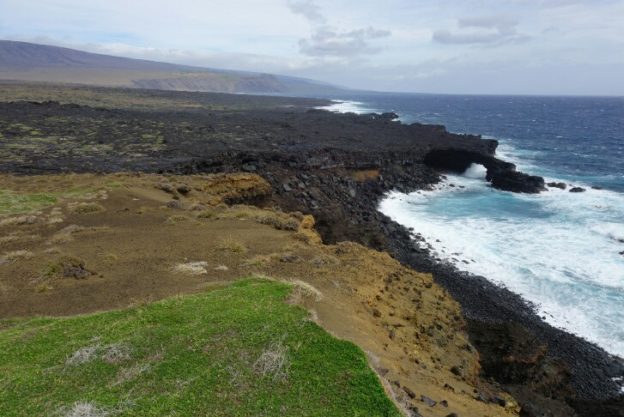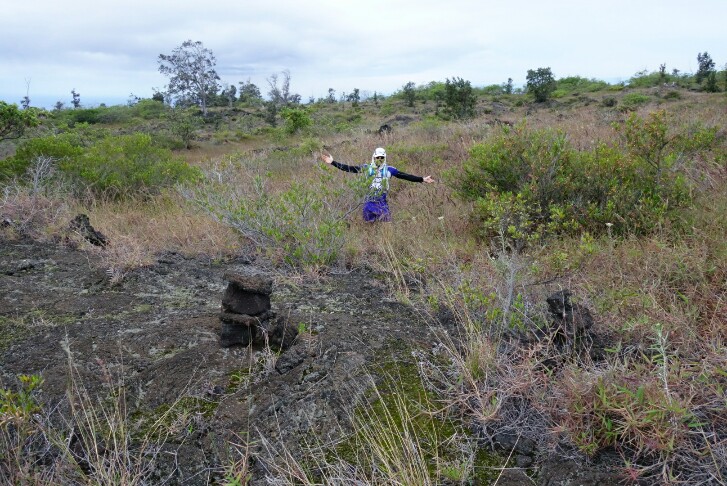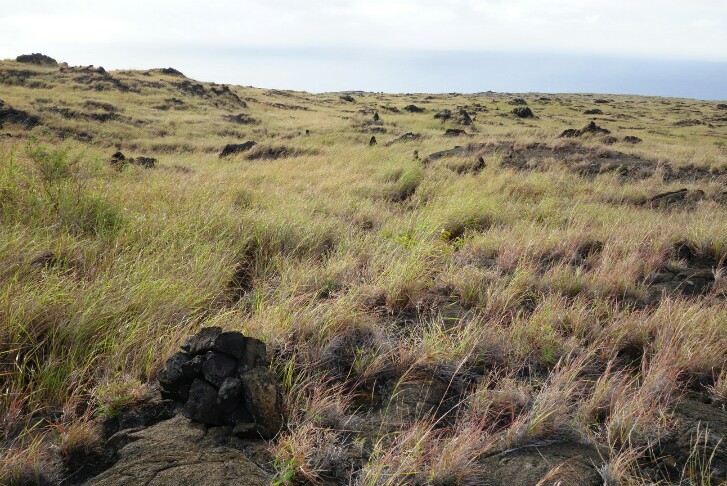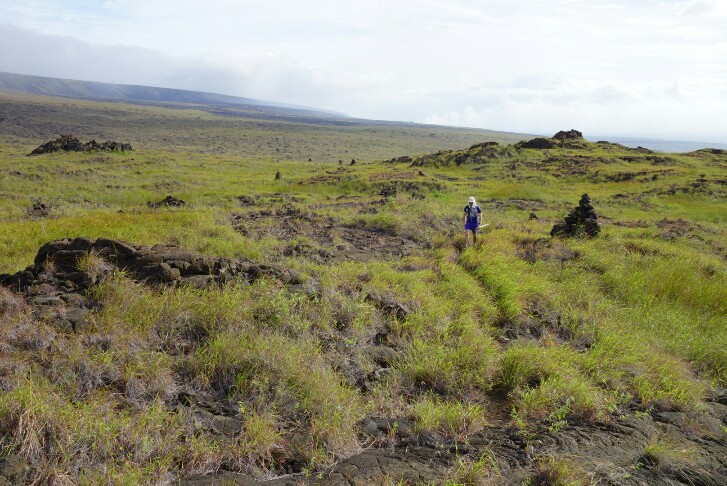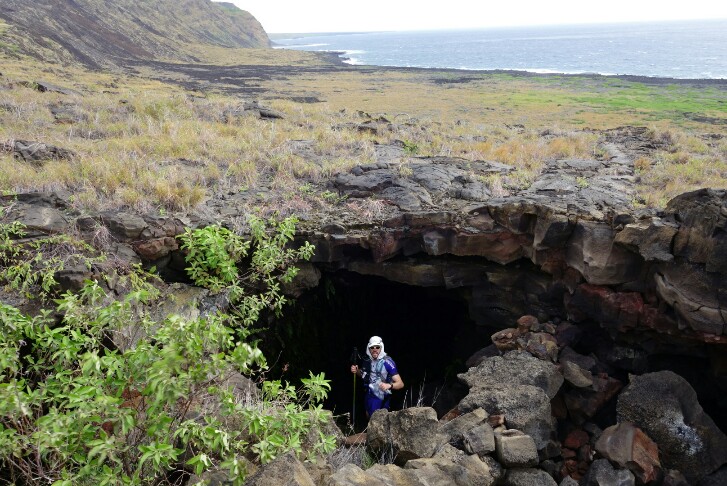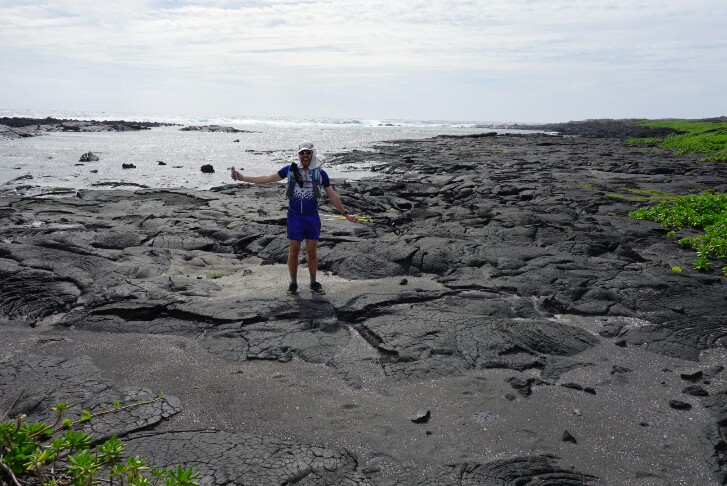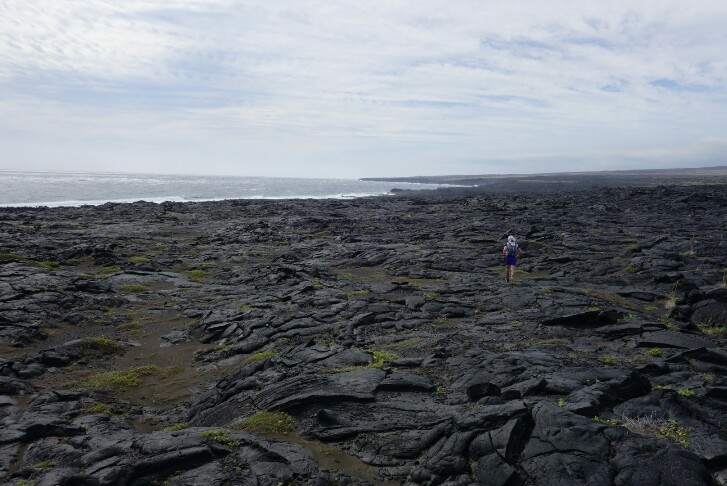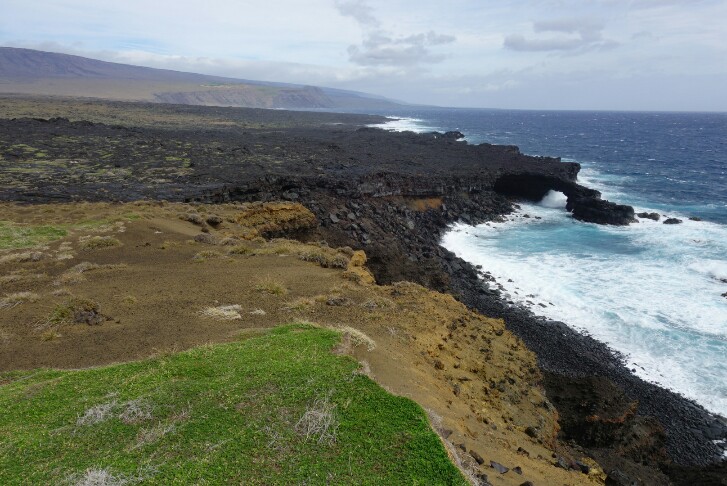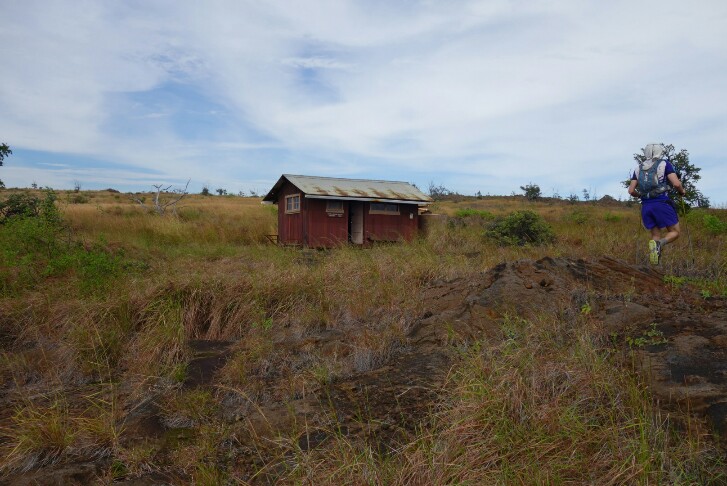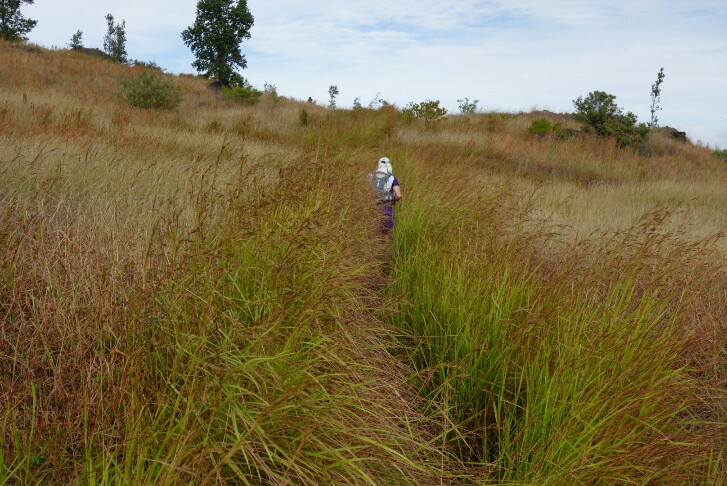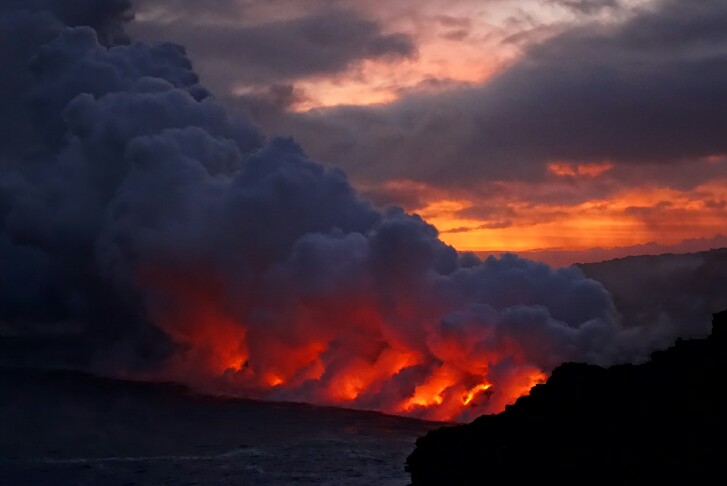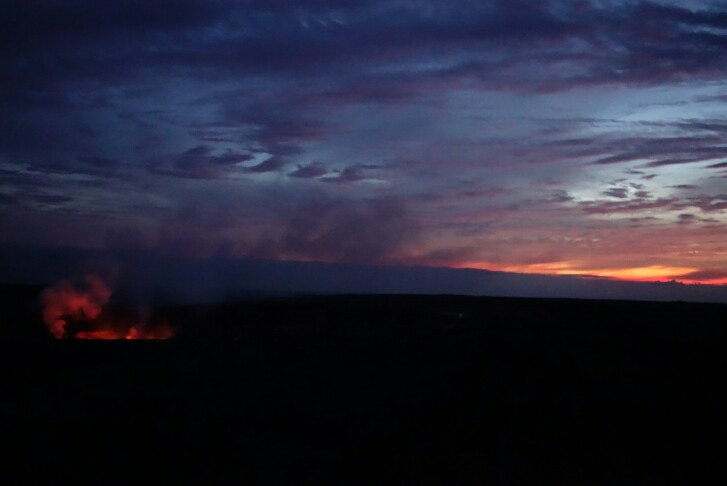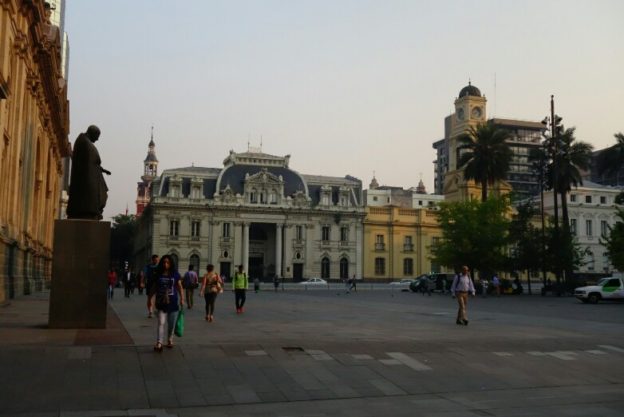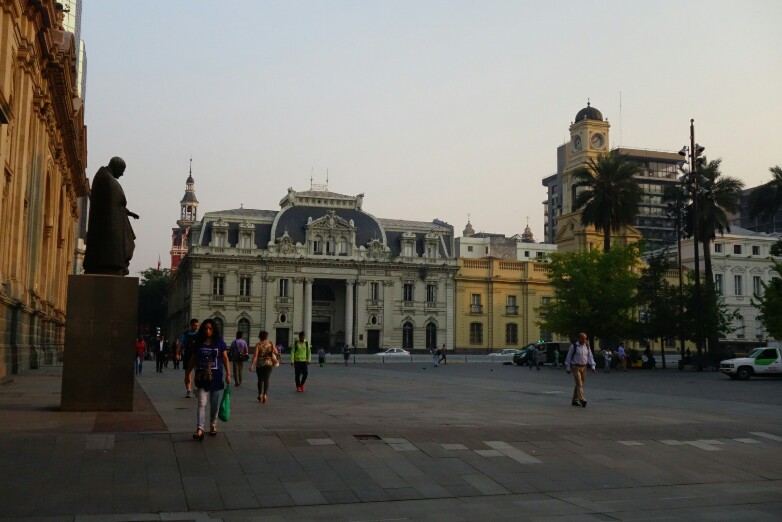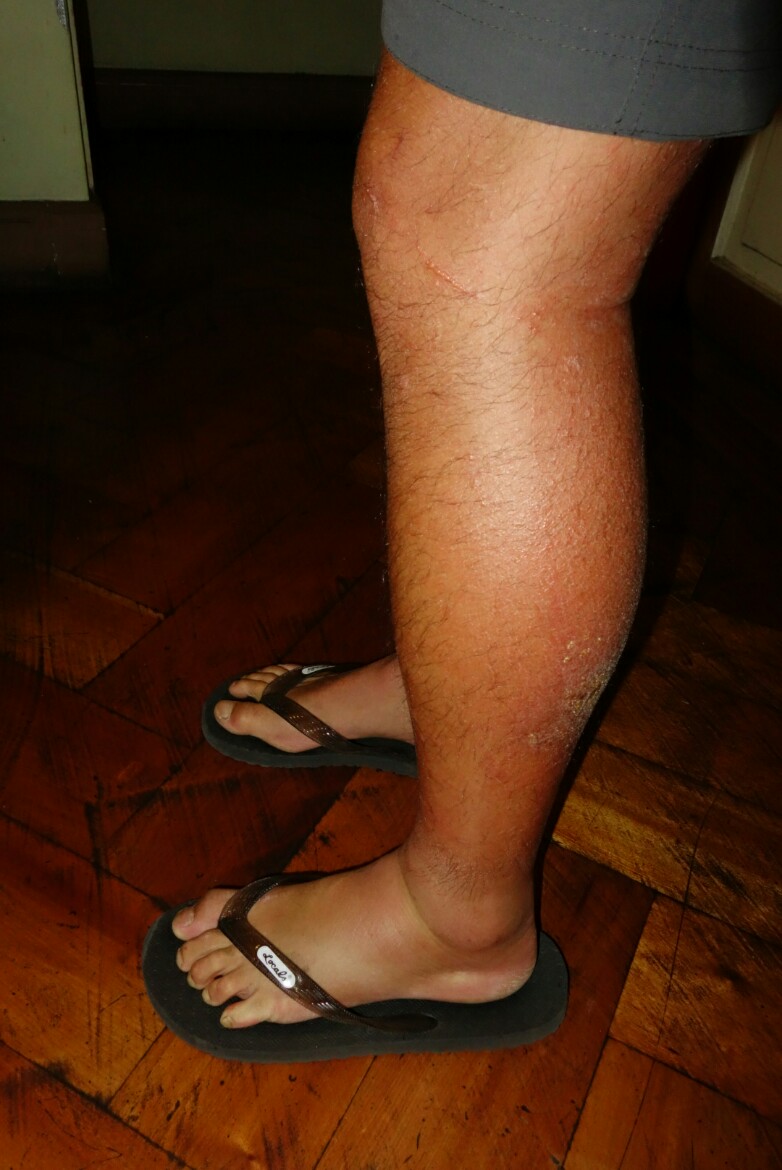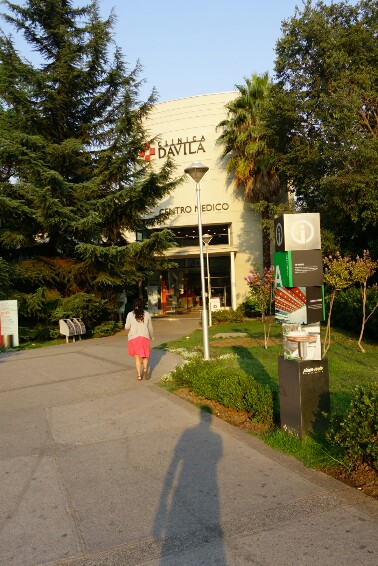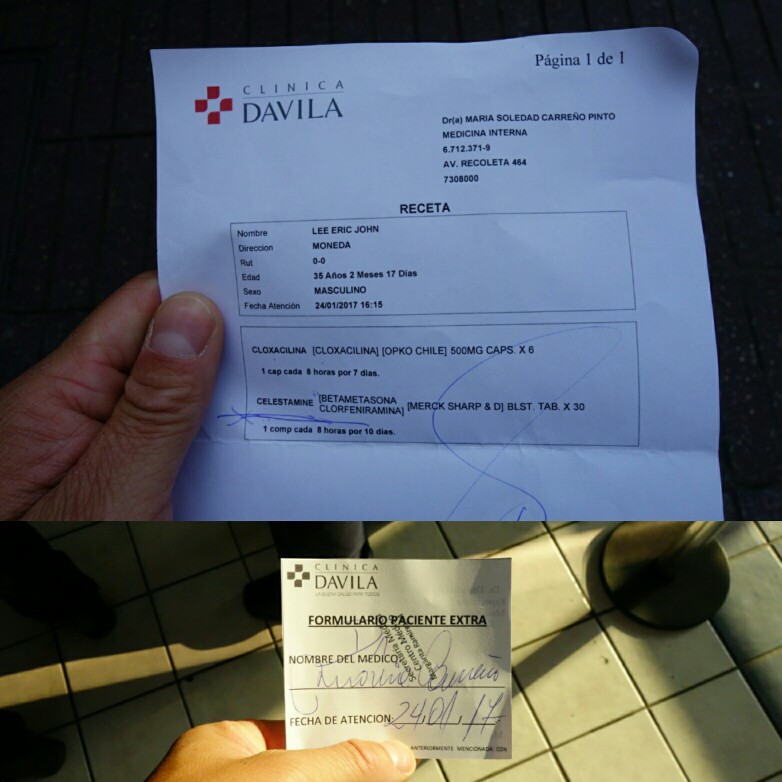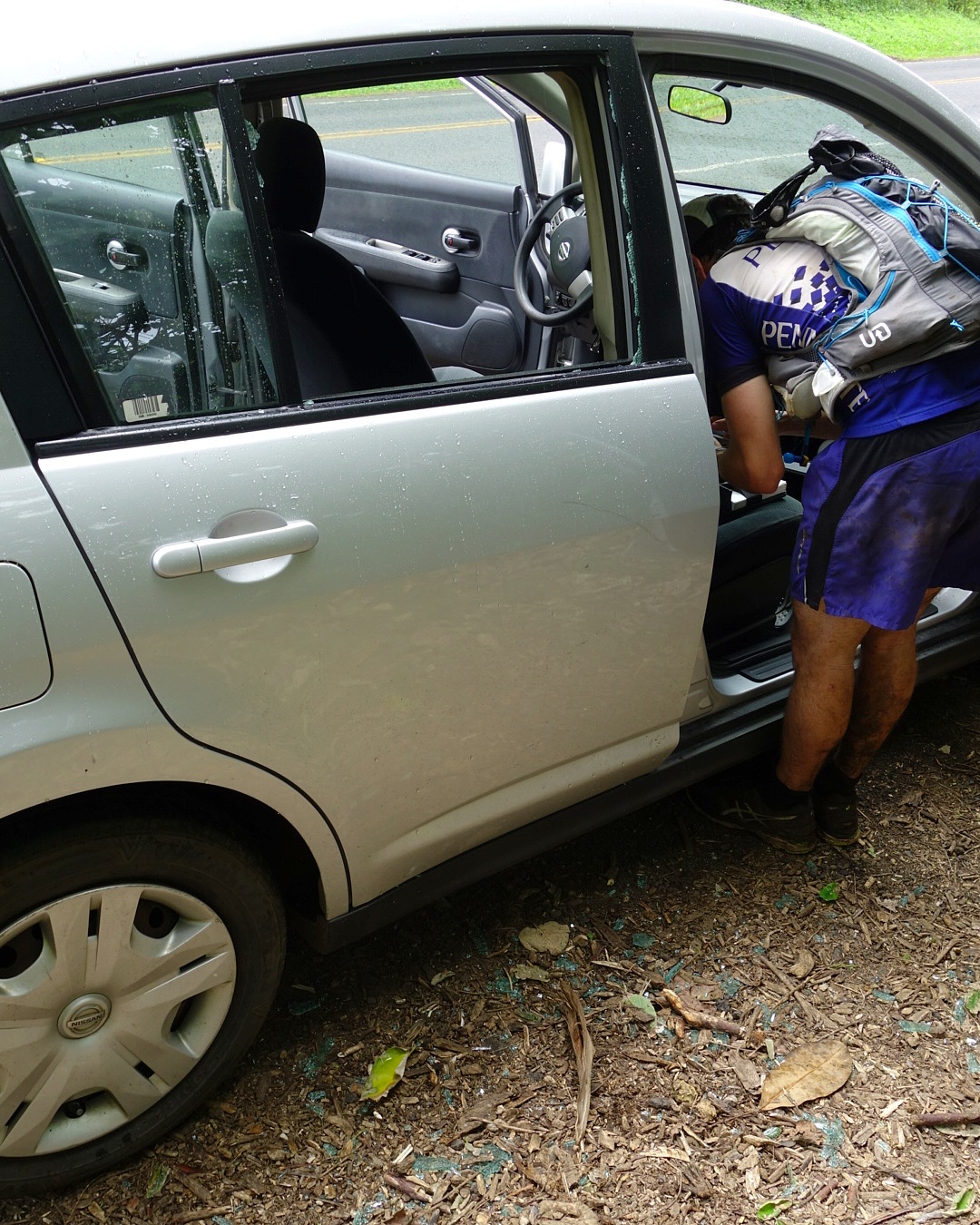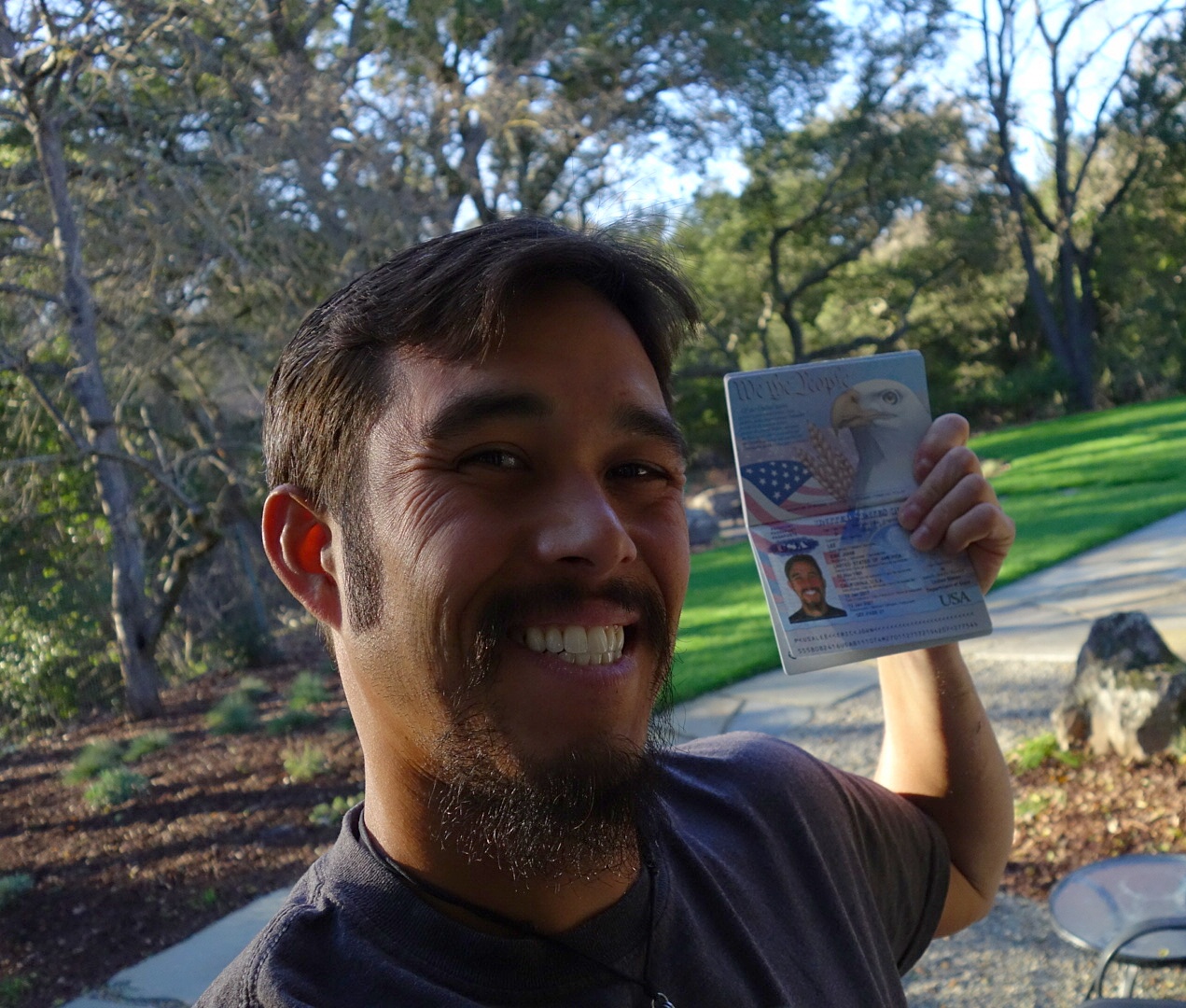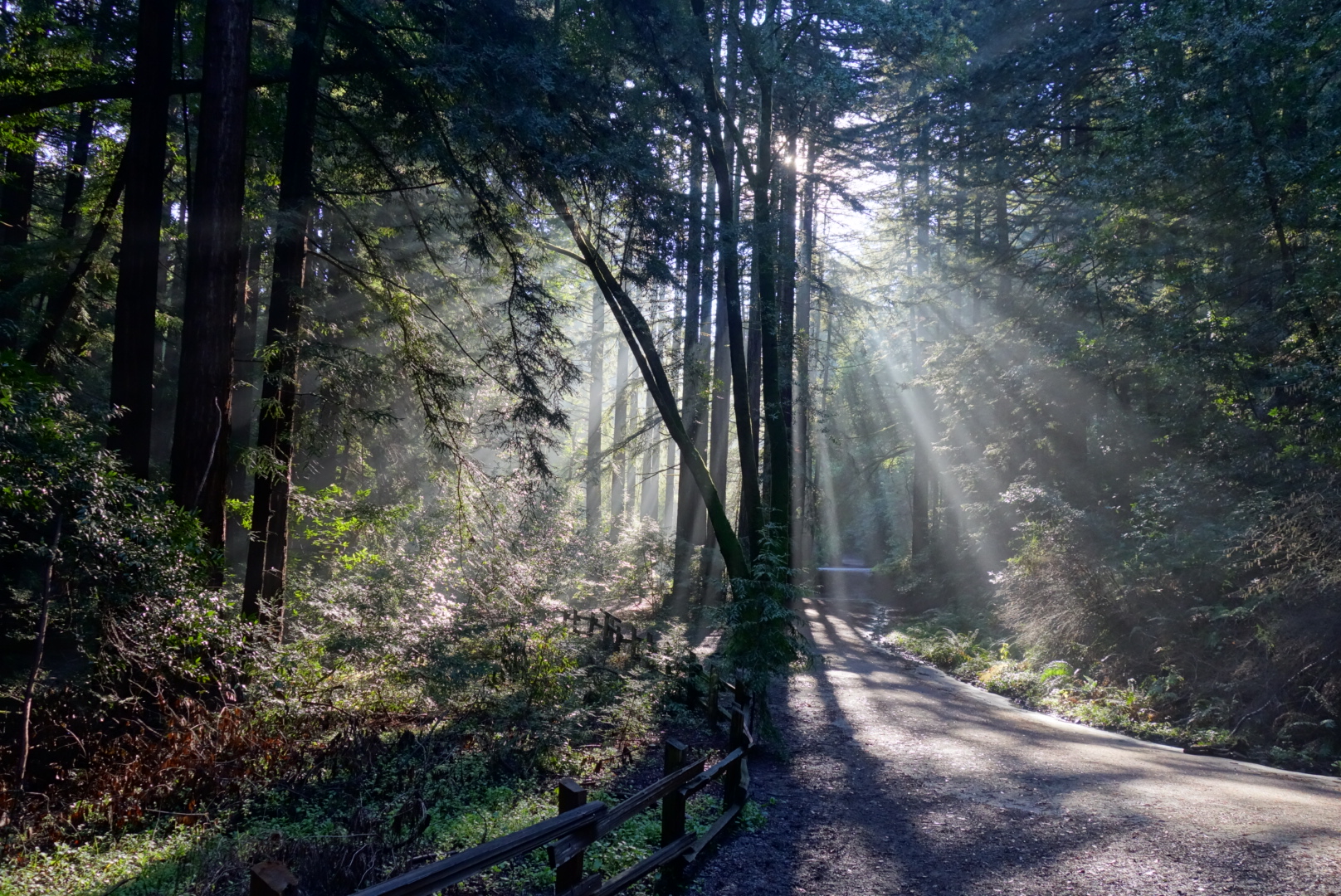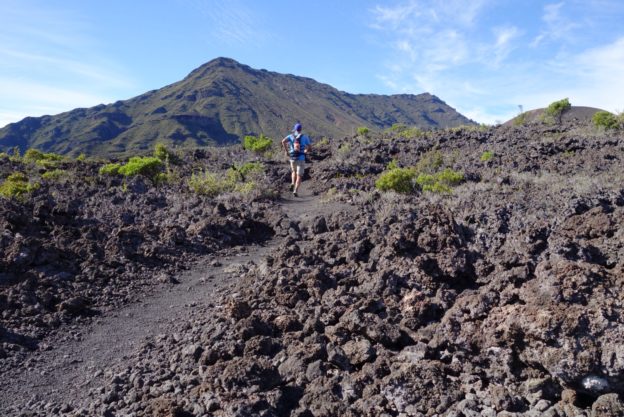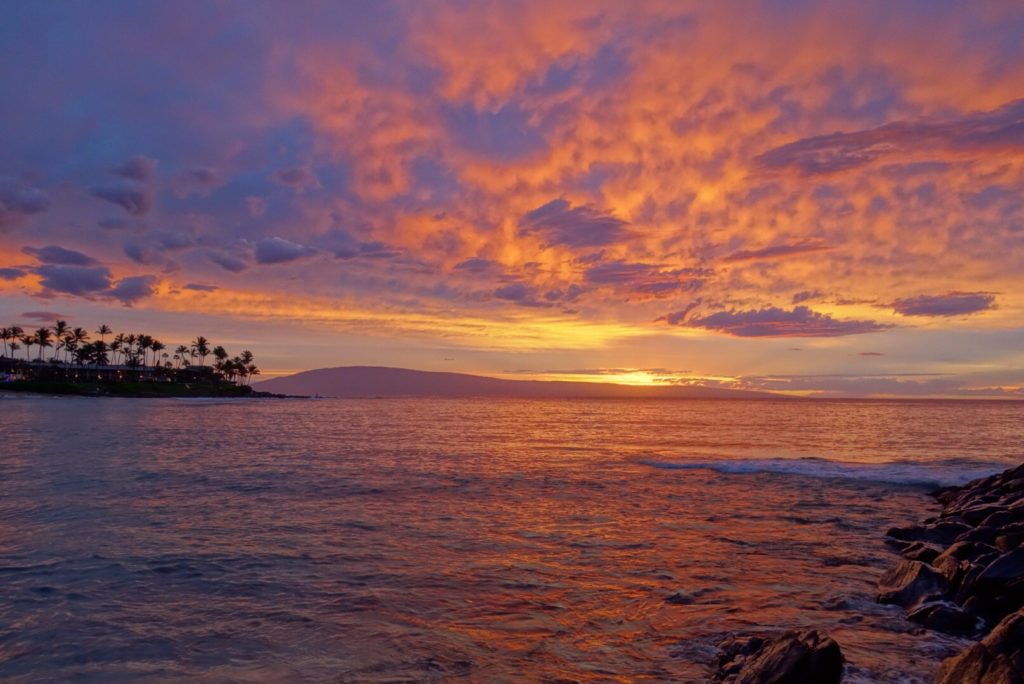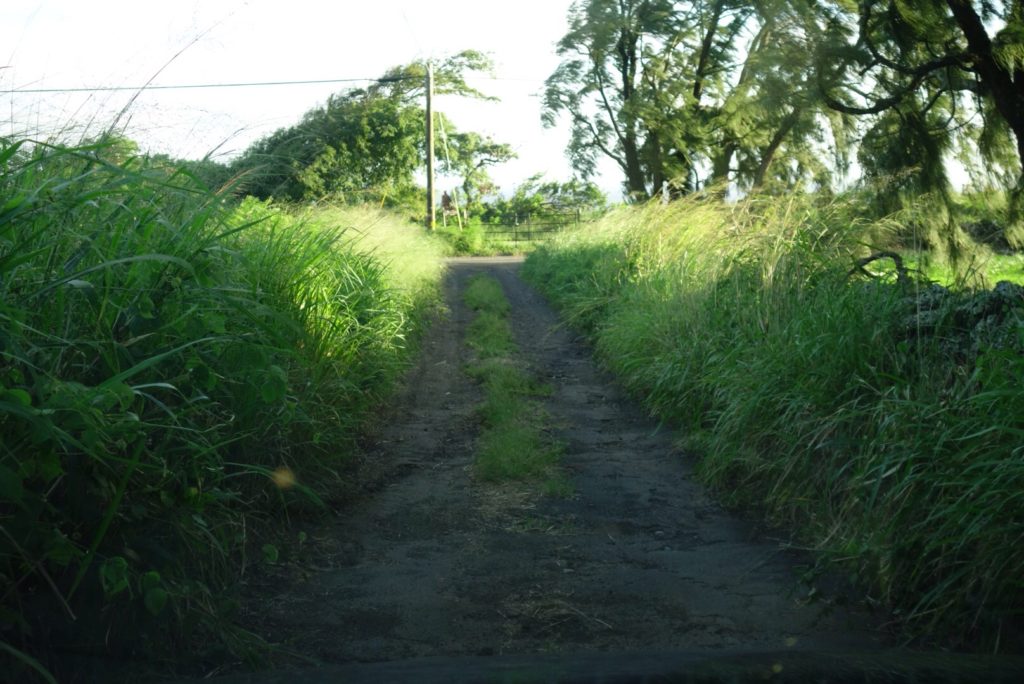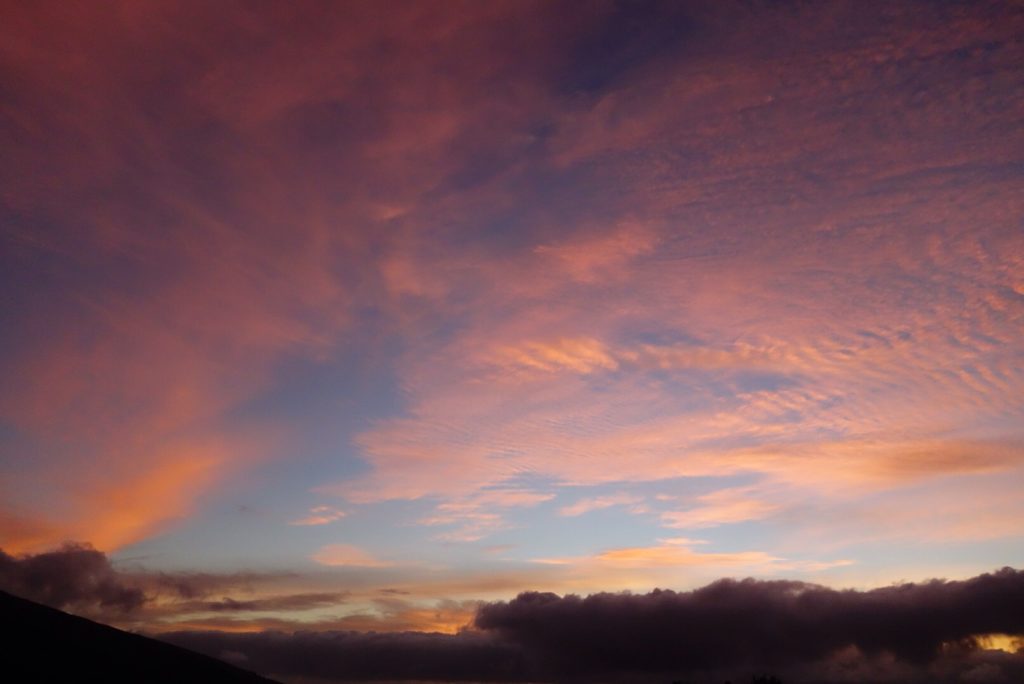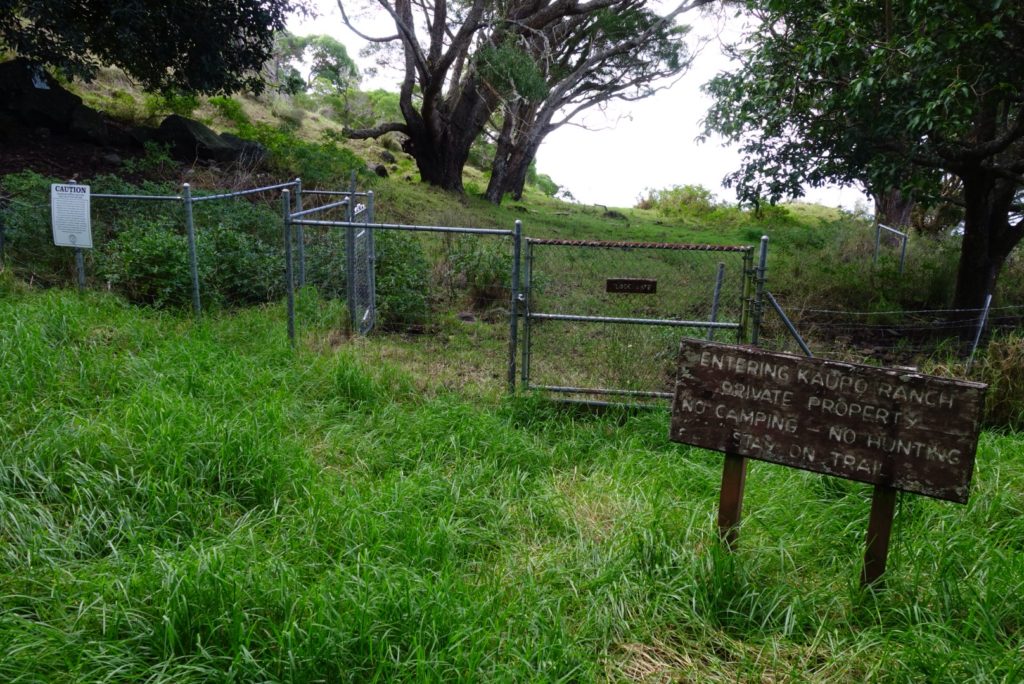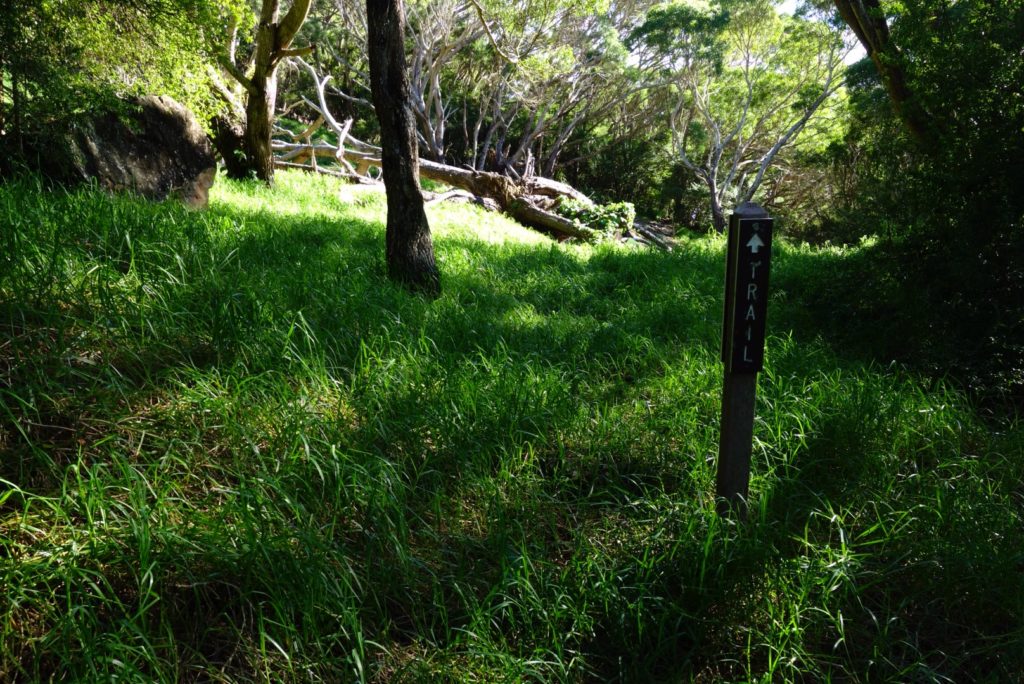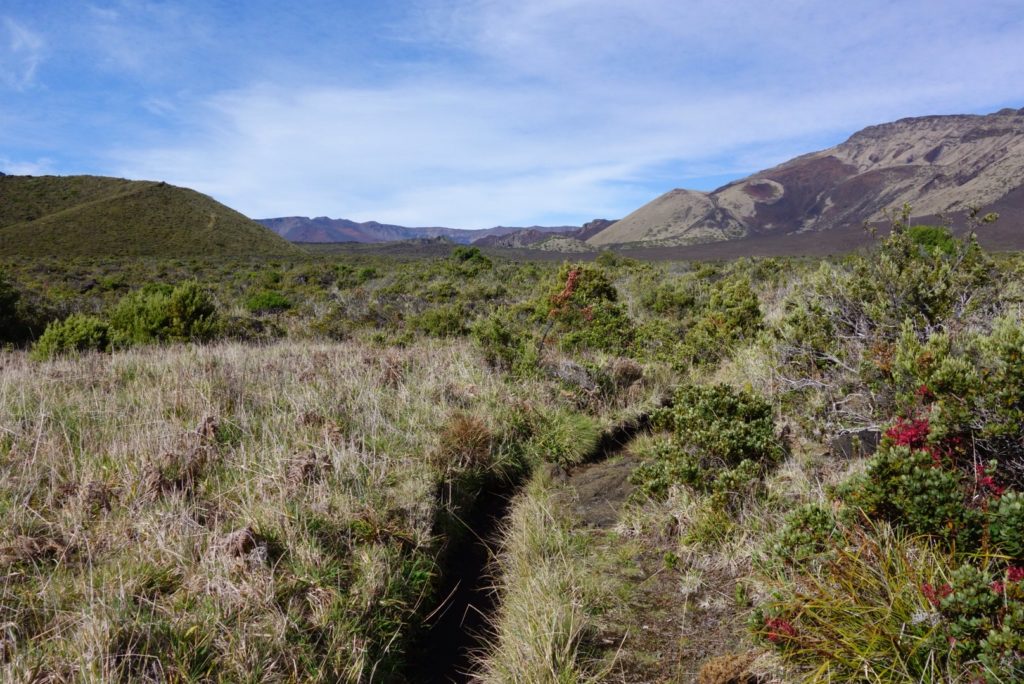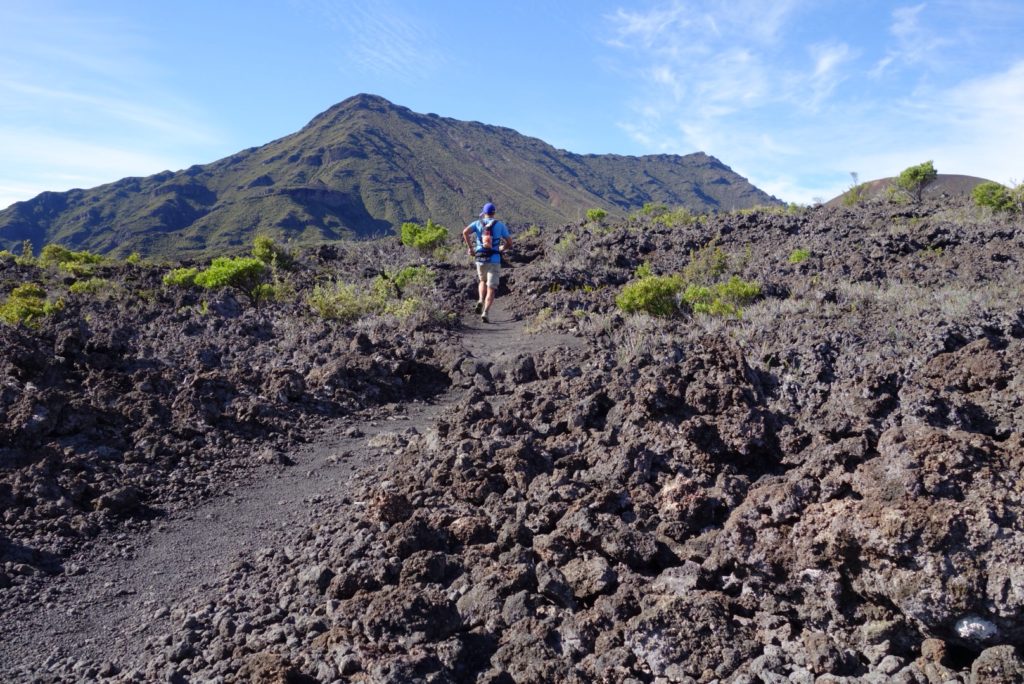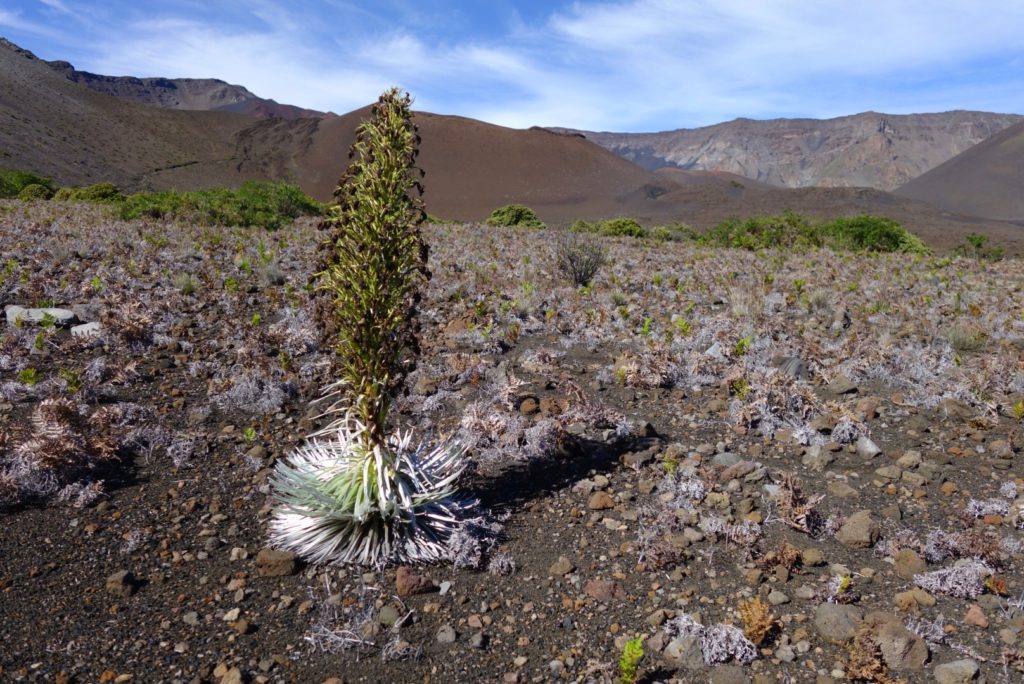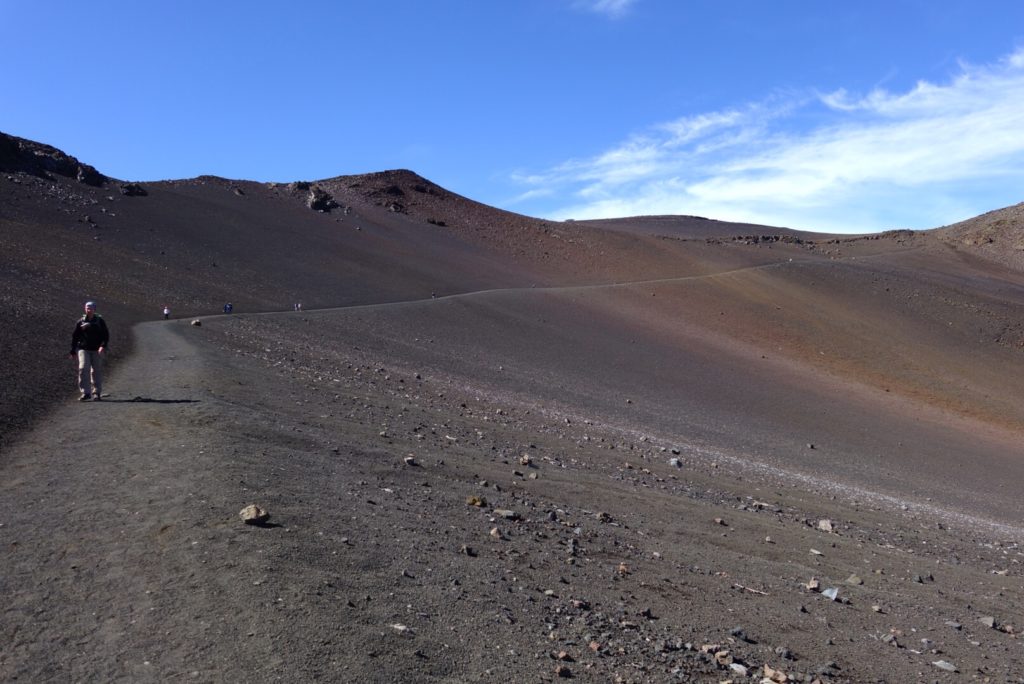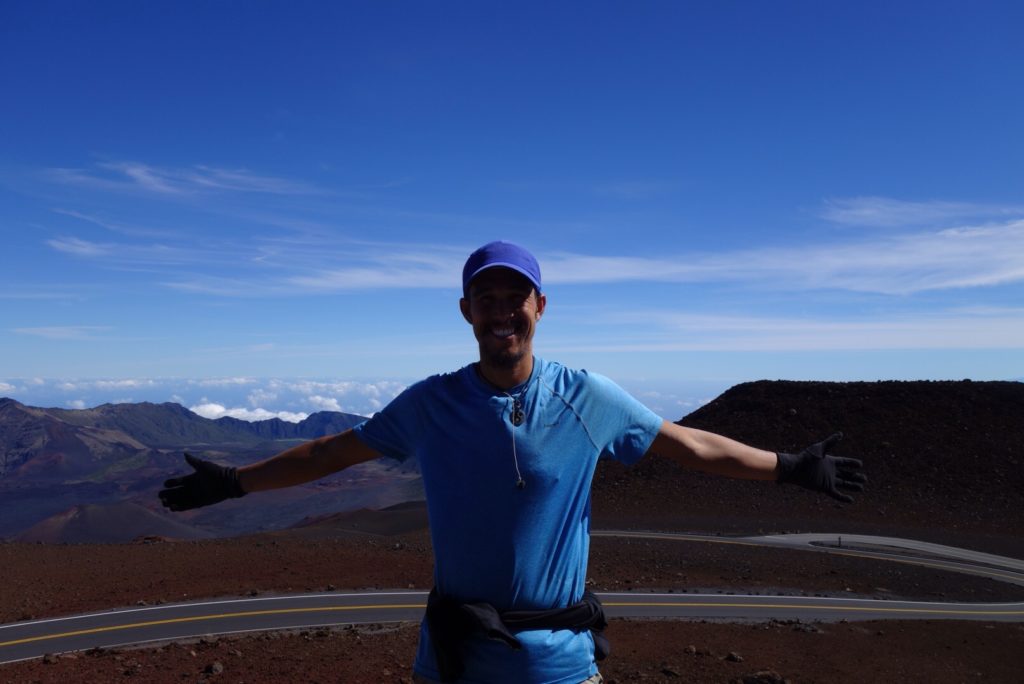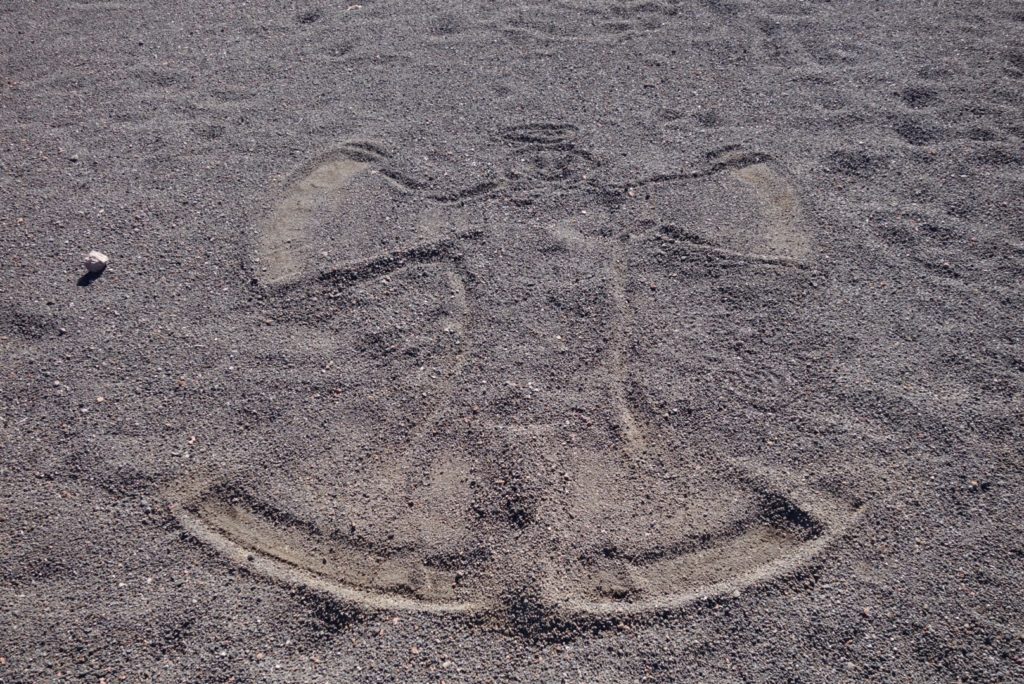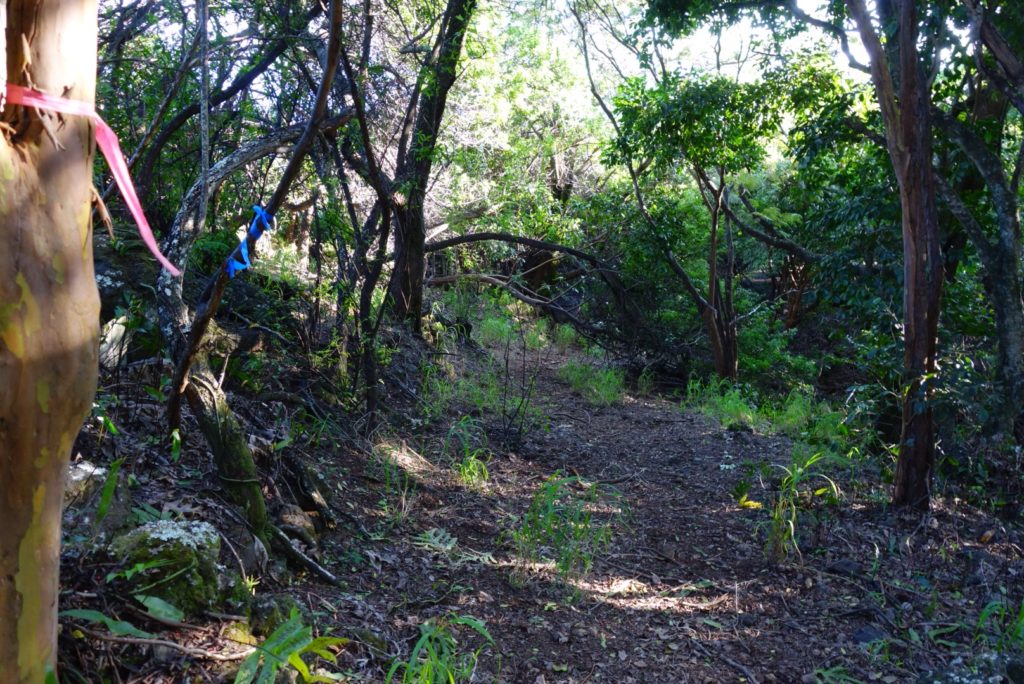An ever changing landscape, Volcanoes National Park is one of the few parks that’s still being molded on a macro scale. Not one mm a year like the grand canyon or a few inches like the redwoods, but in some places dozens of feet of new land are added to this national park by the flowing bubbling lava. Ben and I spent a rainy night at camp along the Hilina Pali Rd at Kulanaokuaniki, but awoke at first light to clear skies. After a short drive we located the unmarked trailhead along Hilina Pali Rd (sometimes called the Halape trail), parked in a small pullout and set off along the cairned, but barely visible route toward Halape.
The ‘trail’ started out as a faint path well marked by cairns, but we were soon dumped onto an old road that was horribly overgrown, but still quite visible. We thrashed through knee to waist deep grass for a few miles until the road disappeared into deep grass and we were left with nothing but a line if cairns to follow. The trail began to descend southward toward the ocean rather than traversing back toward the Chain of Craters road as we’d expected, but it was so well marked we continued forward. We descended steeply down some old switchback to the Halape junction (2:15), much further west along the trail than we were expecting because on the map the unmaintained trail was supposed to drop us onto the Keauhou trail closer to Chain of Craters road. Sadly we’d missed the trail down to Halape and decided that because of the slow conditions we’d alter the route and continue on the loop minus Halape.
As we started across the Hilina Pali trail toward Ka’aha it was very evident that the day was going to be a slow trudge. While this ‘main’ trail was very well marked we were wading through knee to waist deep grass the entire time and almost nothing was runnable. We passed through a lovely grove of trees (shade!) and then slowly descended toward the beach at Ka’aha (5:45).
The Ka’aha shelter is a funny little shack with a rain water tank and a bathroom near a protected swimming bay. We dipped our hands into the ocean and continued onward along the coast. The character of the coast dramatically changed, and we soon found ourselves running across buttery smooth black lava dunes. It was by far the most runnable and most enjoyable section of the entire day. We spent several miles cruising through the barren lava field, the ocean on one side and the Hilina Pali cliffs on the other, finally arriving at the sandy promontory overlooking several sea arches and the crashes waves of the Pacific. This is what I pictured Volcanoes National Park to look like, barren lava beds, towering sea side cliffs, crashing waves and compete solitude, it had only taken us 6 hours to find it.
We then left the ocean and started the long, slow, hot trudge up toward Pepeiao. As we ascended the rocky lava the wind died and we started to bake in the hot sun. I was definitely fatiguing so the pace died a bit. We finally reached the Pepeiao hut perched high on the Hilina Pali with expansive views I the lower park (6:45). We again refilled our water and proceeded to immediately lose the trail coming out of the cabin. After 10min of bishwacking through the grass we finally located the over grown trail headed uphill away from the cabin.
Less than a mile out from the cabin Ben began to cough and some horrid smell was tickling my nose, it took us a few minutes but we finally realized it was SO2 fumes from Kileuea, which made both of us a little sick and uneasy. Over the next few miles we’d continually get inundated with toxic fumes, go through coughing fits, then push onward. Finally as we neared the Hilina Pali overlook we left the fumes behind and were free and clear, thank god nothing lasting. The Hilina Pali overlook is a quiet little cabin with good views of the coast and lava field below, but it’s hard to gain perspective I the area from so far away (8:30). All that was left was to jog the final 3.5 miles of road back to the car and closer the loop. We arrived back at the car at 4:10, 9 hours and 10 minutes after starting, having covered between 26-29 miles (unknown because of trail changes and wanderings).
One of the things I’ve learned from my first six national park ultra run adventures is that not only is there a huge diversity of landscapes within the park system, but often this huge diversity applies to a single park. Volcanoes NP transitions from rain forest, to subtropical, to chest deep grasslands, to barren lava beds and finally sandy beaches. And while the route we ran (really mostly hiking) in Volcanoes was not exactly what I thought it would be, it lived up to the showing the true character and diversity that Volcanoes National Park had to offer. The variety of landscapes, the ruggedness of the terrain, the battle between man and nature (nature is winning), and some beautiful solitude. So the project continues on, with six National Park ultraruns competed, and >40 to go, I’ve got a lot of work to do.
NOTES:
First off Volcanoes National Park suffers the same issue as many other parks, a gross lack of funding. In fact we later found out that the park had laid off all their trail crews for months prior, explaining the overgrown trails. Because I’d this don’t expect super smooth runnable trails, but more an adventurous bushwack, bring a good map. Camping at the ocean side shelters would be quite nice, but Pepeiao want very inspiring and was full of red ants. Since lowers volcanoes is mostly dry grasslands don’t expect to find any water except for the rain collection at the shelters, inquire with the park as to how full the catch basins are and whether the trails have been maintained at all. Note that because of the volcanic activity this run does not include the active lava flows of Kileaua or Pu’u O’o, but both are must see side trips, especially where Pu’u O’o flows into the ocean. So if you’re looking for solitude in a unique volcanic moonscape, give lower Volcanoes National Park a go. Thanks to Vfuel for supporting my habits and to Ben for joining me for this adventure.

